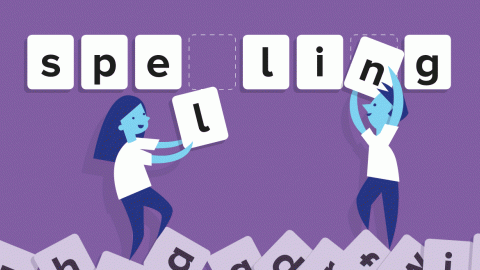Spelling is an integral part of the writing process. Pupils who spell with ease are able to concentrate on the content of their writing and the making of meaning. While it is important to remember that spelling is not the most important aspect of writing, confidence in spelling often has a profound effect on the writer’s self-image. Accurate spelling implies consideration for the reader and also recognises the deeply embedded notions about correctness which we hold as a society about spelling.
Preliminary Spelling;
A child uses scribbles, letters and letter-like shapes . There is no understanding of phoneme-grapheme-correspondence (GPC)
Writing will lack conventions of print, e.g. spacing, left to right…
Semi-Phonetic Spelling:
A child is developing an understanding of GPCs and attempts to use them.
Uses graphemes to represent phonemes which are most obvious, e.g. wt for went (initial and final) or kitn for kitten (initial, medial and final).
Phonetic Spelling:
A child will choose GPCs on the basis of sound rather than spelling conventions, e.g. wen for when or wich for witch.
Spelling mostly represents the phonemes heard in the word, e.g. peepl.
Alternative graphemes are insecure in their use (ai, a-e, ay, a, eigh, ey… for long –a- sound).
A child will generally write as they speak.
Transitional Spelling:
A child’s spelling will move from sound to structure.
Use graphemes to represent all consonant and vowel phonemes as well as syllables.
May still over-focus on the sounds in words.
Beginning to use other strategies, e.g. letter patterns, silent letters, double consonants, mnemonics…
Have a growing bank of known words.
Independent Spelling:
A child will be aware of many patterns and rules of the English spelling system including uncommon patterns and irregular spellings.
Generalise and apply to unfamiliar words.
Use prefixes and suffixes.
Use a range of spelling strategies.
Be aware when a word does not look right.
Have a large bank of known words.

